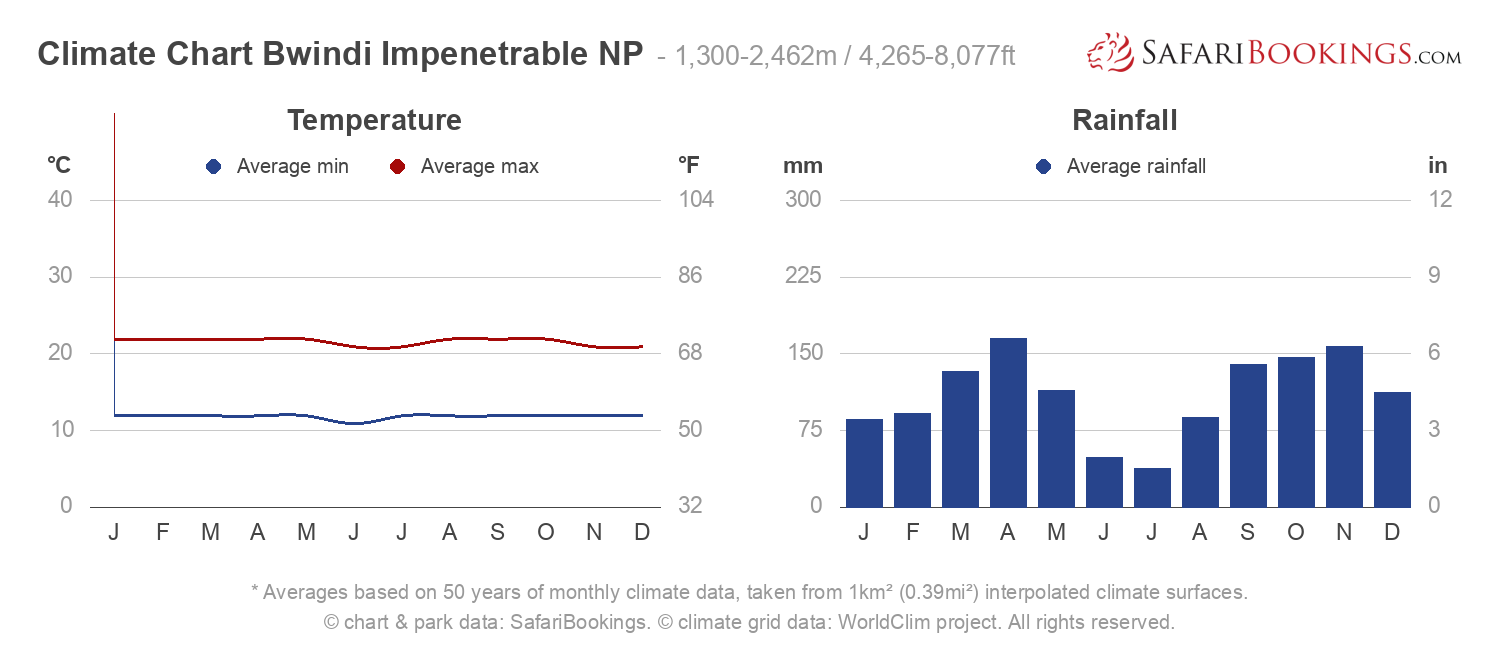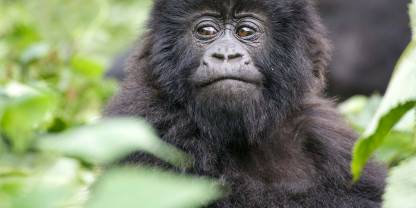
Climate Chart Bwindi Impenetrable National Park – 1,300-2,462m / 4,265-8,077ft
Bwindi Impenetrable National Park has a wet but mild climate. Temperatures remain consistent throughout the year due to its closeness to the equator. Daytime temperatures of around 22°C/72°F are usual, with a significant drop at night to about 12°C/54°F.
Bwindi might receive rain at any time of year. As a rule, however, the months of June and July are the driest, while March to May and September to November are the wettest. Waterproof clothing and hiking shoes are essential.
Dry Seasons June to August & December to February
- June, July & August – June and July are the driest months, but it can still rain. By August the rain starts to increase, but forest trails are still relatively dry. The average temperatures range from 21°C/70°F in the afternoon to 12°C/54°F in the morning. It gets even colder at higher altitudes.
- December, January & February – This is a short drier spell, but rainfall can occur at any time. The rains slow over December and start to increase in February. Daytime temperatures average 22°C/72°F, with morning temperatures around 12°C/54°F.
Wet Seasons March to May & September to November
- March, April & May – Rainfall increases over March and usually peaks in April. Navigating the roads within Bwindi can become difficult, so a 4x4 vehicle may be required (depending on where you will be based). The forest trails also become slippery and more difficult to hike. Daytime temperatures average 22°C/72°F, with morning temperatures around 12°C/54°F.
- September, October & November – These months are wetter. Sometimes it drizzles continuously for days. Daytime temperatures are around 22°C/72°F. Forest trails can become slippery after rains, as can internal park roads, so a 4x4 vehicle might be necessary.

